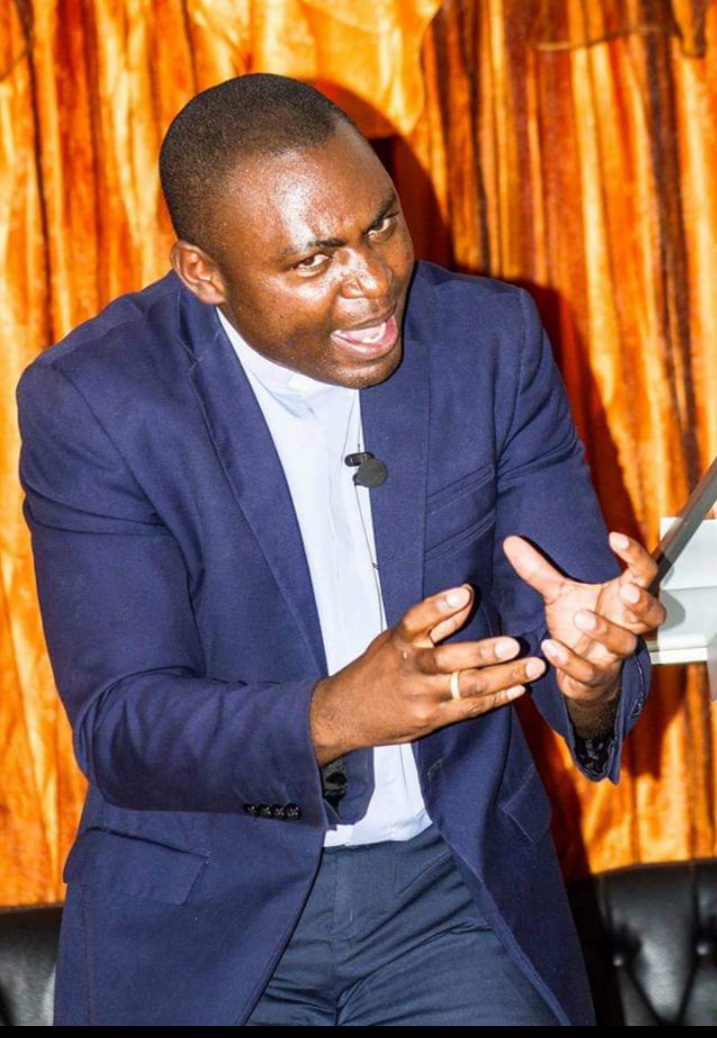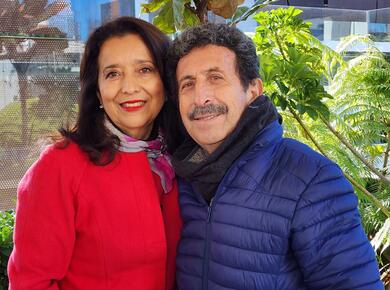Posted: March 2, 2023
We never imagined that the pandemic and its scars would affect our lives and the lives of our institutions to the extent it has. The church could not divorce itself from the difficult realities we lived through, and that still affects the “new normal” we live with today. Like society at large, the church must also learn to reinterpret our reality so that we can improvise creative responses to the needs of the family, the church and the community. It was a time filled with learning along the way as well as a time with many losses and much uncertainty.
A creative response to the pandemic
We halted physical meetings and yet our fellowship was strengthened through the creative ways we found to live it out.
It’s something that we considered impossible before, though now we are beginning to uncover the power of virtual communication, especially when youth who are well discipled apply these tools. Being able to virtually return to worship in the midst of the pandemic, and in spite of the circumstances, brought us together and recreated church which would have been possible in no other way.
Not all households were able to participate. Some people took the risk of visiting one another in person, and others made contact by telephone. Mennonite pastors ventured out in the rural areas, visiting members who lived far afield. They made sure to social distance while they prayed and read the Word.
The creative improvisation and love for the Lord attracted many people who approached our communities during times of worshipping the Lord and then worked through their problems. Hallelujah.
What is Anabaptist worship like now after the pandemic?
I think that the liturgical process is what was most affected because most people experienced the service via a screen, creating an understandable distance between them. Now the task is to work at reconnecting and fellowshipping in the Spirit to strengthen our relationships. It is important to note that the pandemic and its repercussions mostly affected meeting in person at church services. The pandemic affected us with loss and created much pain, but it did not destroy us. We discovered that the church knew how to express and live resilience as the body of Christ.
The communion of the saints
We learned that the body of Christ is real and extends beyond the four walls of church; it is all those who live in the communion of the saints. For sure the pandemic created distance because our normal was of relating were truncated and we had to “watch from a distance” as we participated in church. The churches that worked hard at emphasising the importance of community in spite of the circumstances were better placed to maintain fellowship amongst the members.
The Spirit of God sustains and maintains fellowship, which is experienced through the synergy of uniting our hope, faith and presence. In this way, fellowship is alive and transcends time, distance and place. Worship overcomes our barriers because it depends on the power of God’s grace and love, rather than on our own efforts, to foment the communion of the saints, the community of the Spirit.
Although members were unable to physically meet, they knew they were not alone. Prayers, intercession and petitions were a loving part of the Spirit-led community that gave a sense of community while worshiping at a distance. We learned a great lesson from the importance of communal solidarity and following Jesus under such difficult conditions because it prompted us to be more creative.
Worship as a liturgical expression of prophesy

Anabaptist worship has always been known for being a place where faith and life can be found. The churches were clear about the importance of worship as mediating an encounter between God and God’s people. Each service nourished hope and spirituality within people who were suffering. It is for this reason that professor Amós López maintains, “worship should always be an expression of adoration in spirit and in truth”. As Jesus says to his disciples: “But the hour is coming and is now here when the true worshippers will worship the Father in spirit and truth…” (John 4:23).
Worshipping in spirit and in truth is the essence of a liturgical attitude that is prophetic. We are not a duality but rather a unity, writes Amós López; “humans don’t have a body and a spirit, they are bodyspirits that express and realize their totality through words and gesture.” Therefore, our services should not be directed only at people’s souls. Creating a service that fails to affirm life is to create a subjective experience that defies the prophetic vision of the service.
The clearest example of this is the Lord Jesus. Resurrection happened to his body but also in his Spirit, giving Jesus a quality of liberation that transforms our reality regardless of how difficult it may be. His message shows new paths and horizons that help us imagine a dignified and abundant life. For this reason, we argue that the strength of our relationship comes from our fellowship empowered by the Spirit and not by force of habit.
Now that we are returning to in-person encounters, the church should embrace the opportunity to reimagine what a prophetic liturgy could be. Worship today must be healing, reviving, unifying, nourishing and hopeful. As such, the service should never lose the prophetic liturgical dimension as these elements provide consistency and meaning to worship. It is prophetic in that worship illuminates the will of God through the Word, songs, etc. It is also prophetic in that it always shows us God in the midst of everyday circumstances. The people of Israel are a paradigmatic example of this.
Worship as an expression of committed love and solidarity
We are created to love. For this reason, all our gifts should be channeled towards putting love, mercy and justice into practice. In this sense, professor Jaci Maraschin considers our own bodies to be the greatest gift of all, because through them we can love. The apostle Paul, on the other hand, believes that the greatest gift of all is to love. He expresses this in the middle of his discussion of the gifts of the Spirit in his first letter to the Corinthians. He presents the gift of love as an indissoluble unity of gesture, theological meaning and life-giving attitude. That is, a form of worship that affirms life and life in abundance.
Even as physical presence was limited during the pandemic, love creatively transcended this dimension. There were many losses: life, employment, resources. And together these losses affected the life of the community. But how special it was to know that in midst of the loss, it was possible to hear someone’s voice, receive financial support, or share food across the distance, as an expression of God’s love.
What do we mean when we say “worship”?
We know that there are many ways to approach the topic. However, in our case we follow in the steps of professor Nelson Kirst who simply states, “worship is the meeting of the community of faith with the eternal God of life. Of course, this encounter is possible, not because we desire it, but because God, in grace and love, allows it.” This is why we should not view worship as an established religious routine. Worship as an encounter should be planned, yearned for, desired and enjoyed by a community that knows that it will meet the God of life who will be present with the community. To achieve this, we set times, rhythms, and places for this encounter with God and with the community itself.
This encounter has a place and meaning, not because God is waiting above when we open the doors to the church, but because each participant carries the Spirit of Christ with them. It is they who make it possible for the Spirit to be present – blessing, healing, forgiving, transforming us. In other words, worship starts at home.
We are responsible for preparing the meeting with God, using all of our heart, our creativity, our will and the gifts God has given us, and putting them at the service of others. Worship is the community of faith. Therefore, responsibility for this meeting goes beyond that of the pastor, the musicians, and the leaders; the whole community is responsible for it. The worship service is a vital part of our lives and affects how we envision and experience our daily lives.
The special character of services

Photo: Tiz Brotosudarmo
Each worship service is unique.
The proposed Bible readings for a service orient the rest of the liturgy because God’s Word guides the content of worship.
These days, singing and music often make up 65 percent of the service. Also, we see that the music and songs should serve the nature of the service. As such, the worship team and worship leaders should understand that worship does not belong to them; it belongs to the community of faith. They should also understand that they are there to serve the community’s real and felt needs. They should remember that the songs are theology set to music. Therefore, the songs should affirm truths and principles that justify faith.
Worship should inspire service which is why each service should end with a refrain like, “Yes, send me,” so that everyone is open and willing to serve the church of the Lord in solidarity.
In a nutshell, the worship service should be perfected until it is like Jesus who came to serve and not to be served.
Conclusion
What happened during the pandemic taught us great lessons that we should treasure. The pandemic was an escatalogical lesson for a comfortable church.
Through the pandemic we learned that the church should be aware, alert and willing to adjust to the signs of the times and break from our comfort zones so that we can respond to people who are suffering, waiting, trusting and resisting in the name of Jesus. We should continue encouraging life and faith within God’s community.
The church learned that it is vulnerable, and that we need God’s grace, love and blessing. We learned to express ourselves with humility, not with bragging or viewing ourselves as all-powerful. Rather, we should be a church that understands that we are sustained only because of God’s grace and love.
We also learned to be incredibly creative and to improvise when needed. In consequence, we found out that fixed, rigid models that worked for a time must give way when circumstances demand something different.
May God keep guiding out steps. May we never be without God’s grace and love.
—José Rafael Escobar Rosal
Bibliographical notes on the authors mentioned in the article:
- Amós López Rubio has a DTh from the Instituto Universitario ISEDET, Buenos Aires, and is pastor of the Fraternidad de Iglesias Bautistas de Cuba (FIBAC).
- Nelson Kirst has a DTh and is author of the book Culto Cristiano: Historia, teología y formas (Christian worship: history, theology and forms), “Colmenas” Series.
- Jaci C. Maracshin was professor emeritus of St. Paul Methodist University and author of the book A Beleza de Santidade (The Beauty of Holiness).
- César A. Henríquez has an MA in theology from the Seminario Evangélico Asociado and in Bible at Universidad Bíblica Latinoamericana. He is an ordained pastor of the Iglesia Evangélica Libre in Venezuela.



Comments: